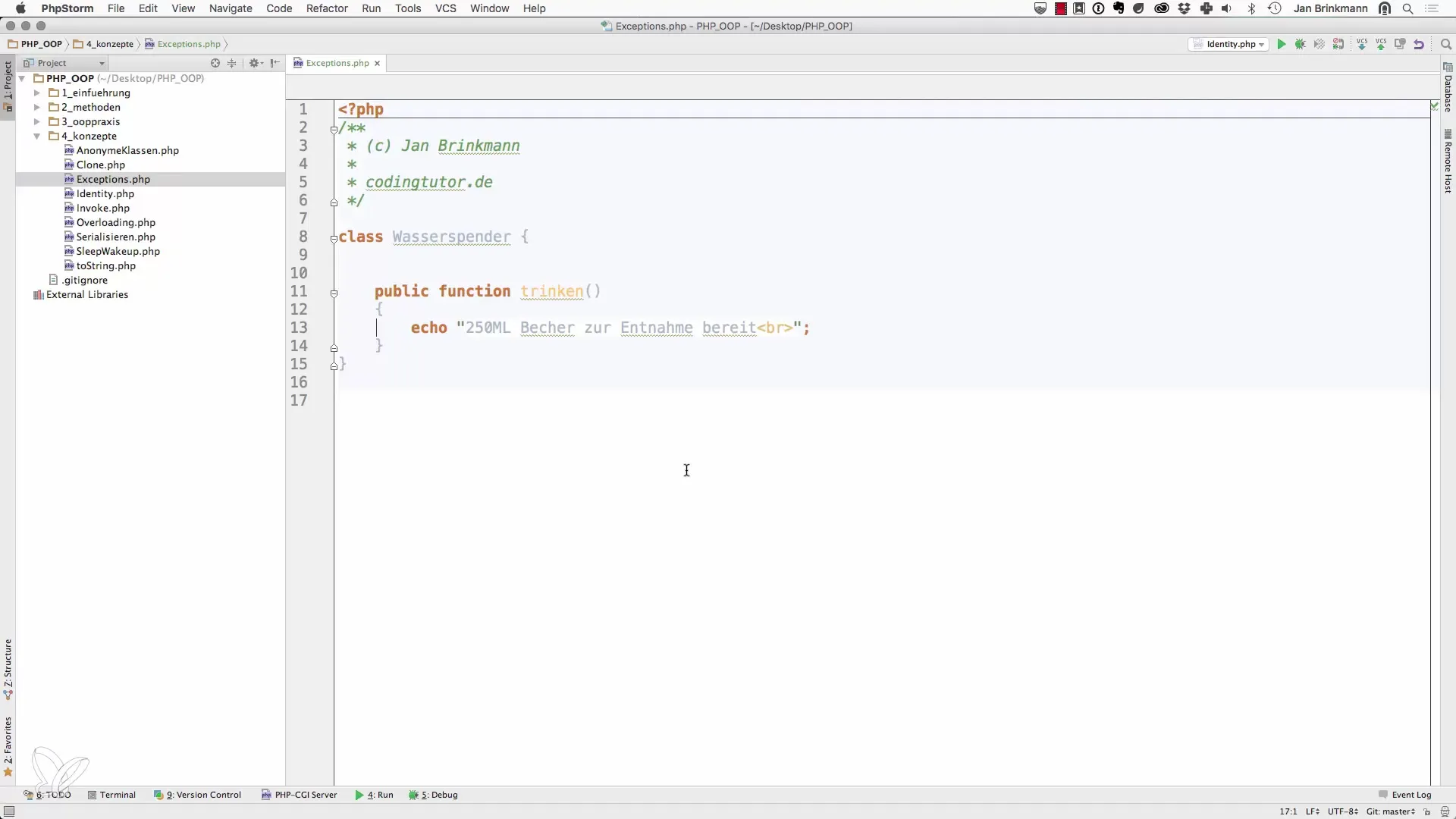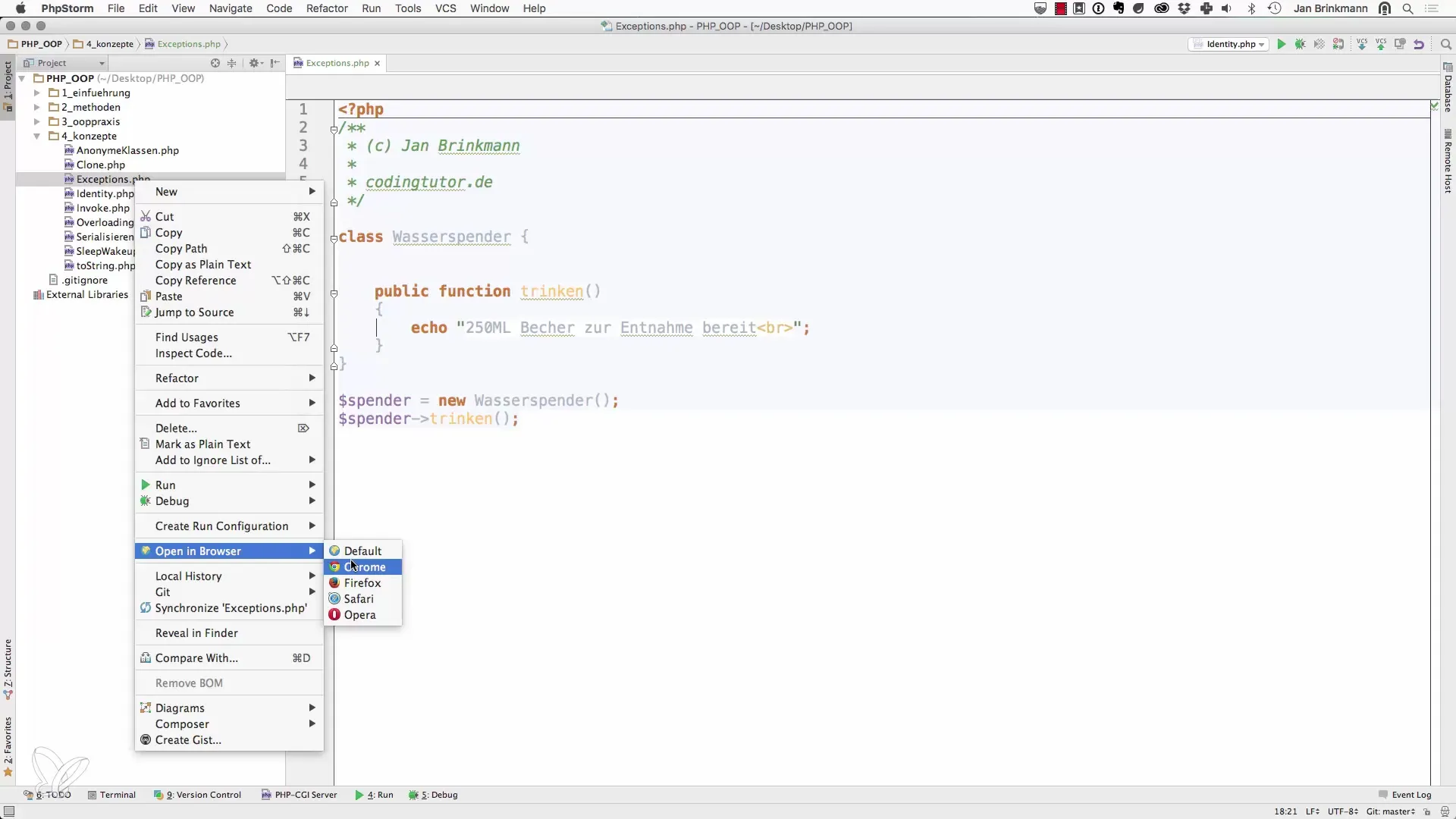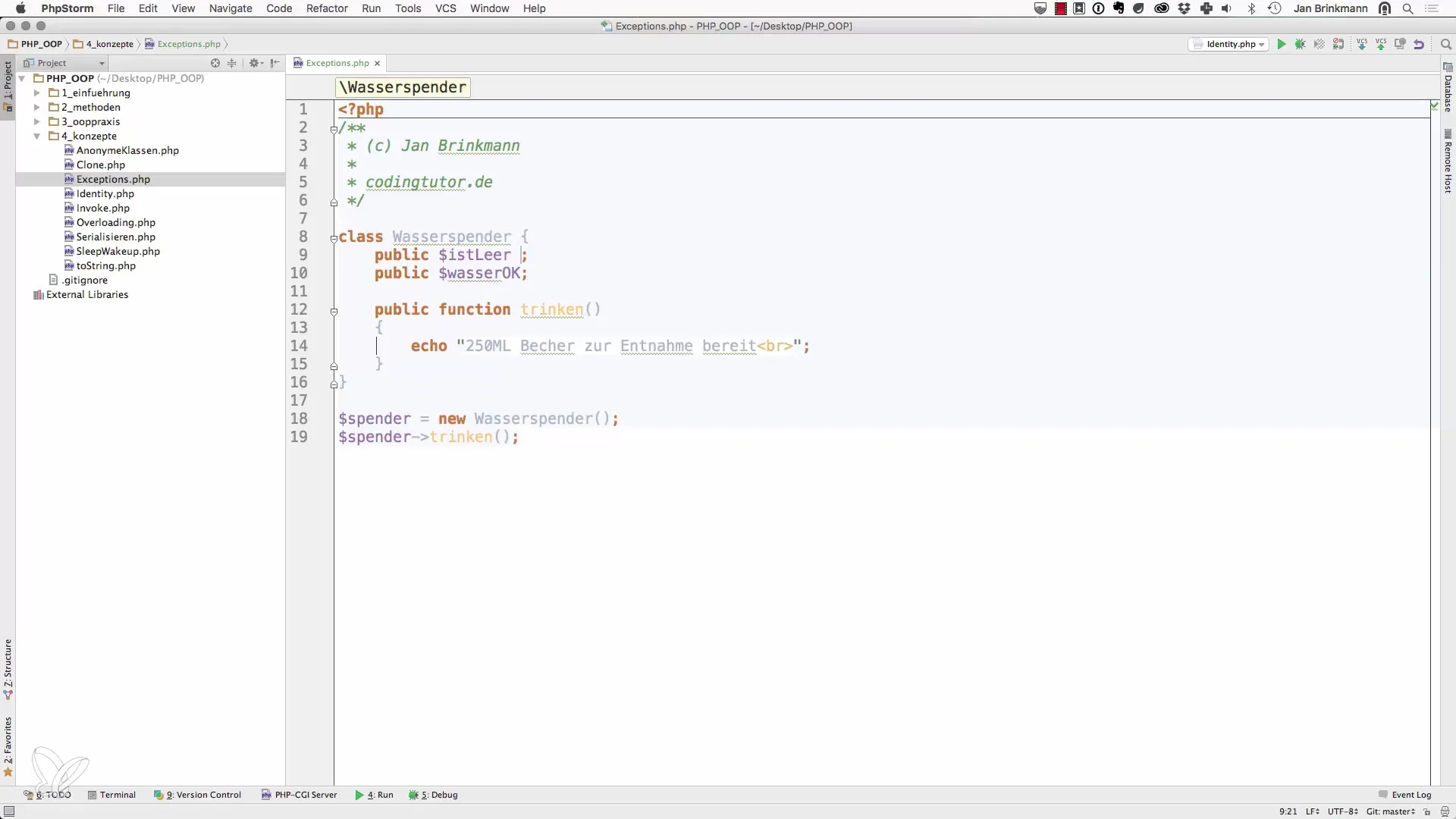Handling errors is a fundamental part of software development, especially in object-oriented programming. In this tutorial, you will learn about the use of exceptions in PHP, which are crucial for effective error handling. Whether you are developing a simple project or a complex application, it is important that your code remains robust and error-resistant. So let's dive right into the subject and explore the various aspects of exceptions in PHP.
Key Insights
- Errors can be efficiently handled using exceptions in PHP.
- Creating and using try-catch blocks allows for a clear separation between regular code and error handling.
- Custom exception classes can be defined for specific types of errors to enable targeted handling.
Step-by-Step Guide
Creating a Water Dispenser with Exception Handling
To clearly understand the concept of exceptions, let's take a water dispenser as an example. First, you will create the class WaterDispenser, which provides methods for drinking as well as the corresponding conditions for exceptions.

Here, you first define the properties of the water dispenser, including whether it is empty or the water is of poor quality. These conditions are crucial for error handling.
Throwing and Catching Exceptions
After creating the class, you can instantiate a water dispenser and try to drink water. This is done in a try-catch block, which helps catch the exceptions and handle them meaningfully.

In this block, you attempt to call the drink method. If an exception occurs—such as when the dispenser is empty—the error message is displayed without crashing the entire script.
Improved Error Handling with Specific Exceptions
For detailed error handling, you can also create custom exception classes to better categorize different types of errors.
Here, you define two different exception classes. This allows you to use more specific catch blocks to respond to different error cases.
Multiple Catch Blocks for Specified Handling
Now, you can define multiple catch blocks to handle different types of errors in different ways.

With the specific catch blocks, you can now provide an individual message for each exception case and improve the user experience.
Using Finally
An additional way to increase the robustness of your applications is the use of the finally block. This is executed regardless of whether an exception has occurred or not.
Here, the finally block is always executed, whether or not an error has occurred. This allows you to have a clean closing message or to close resources.
Summary - Using Exceptions in Object-Oriented PHP Programming
By using exceptions in object-oriented programming in PHP, you gain effective control over errors and their handling. A thoughtful approach with try-catch blocks and the creation of specific exception classes enables targeted and user-friendly error handling. With the finally block, you can ensure that important final actions are always executed after error handling.
Frequently Asked Questions
What is the function of exceptions in PHP?Exceptions enable structured error handling and a clear separation between normal program flow and error management.
How do you create custom exception classes in PHP?You can create custom exception classes by inheriting from the base exception class in PHP.
What is the purpose of the finally block?The finally block is always executed, regardless of whether an exception occurred in the try block or not.
When should you use custom exceptions?Custom exceptions are useful when you want to clearly identify and handle specific error states.
What happens if an exception is not caught?If an exception is not caught, it usually results in a program crash and displays an error message.


